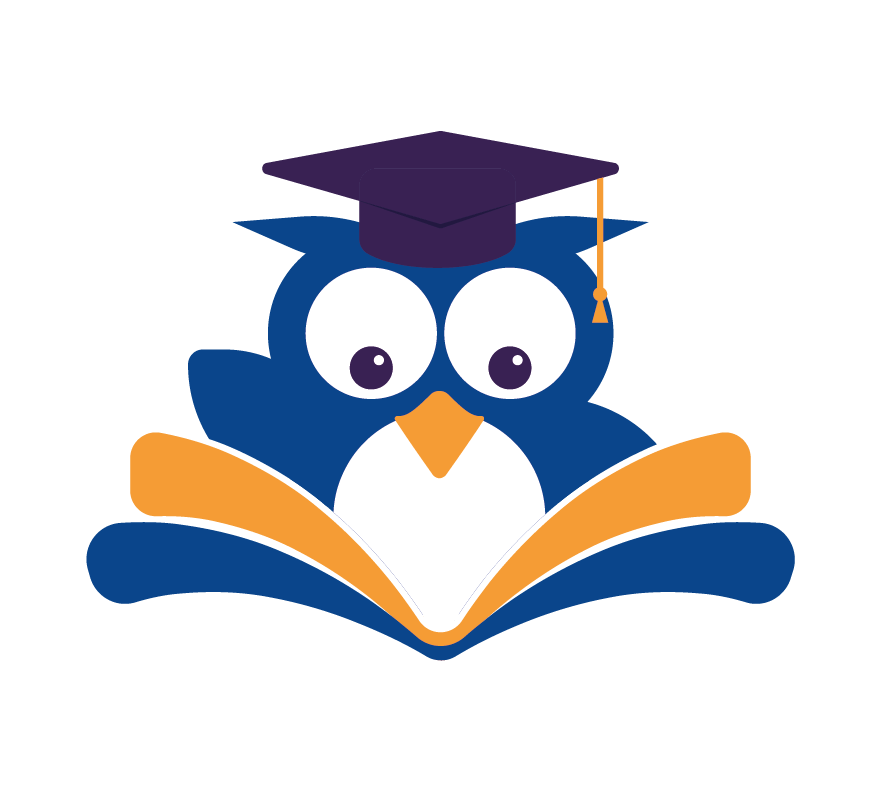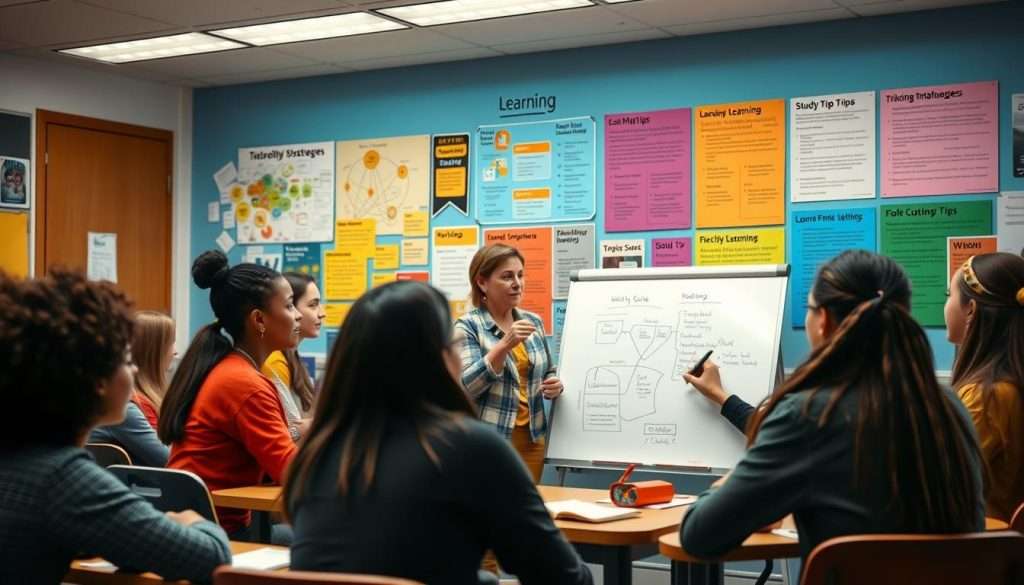We’ve all heard that teaching is one of the best ways to learn. But have you ever wondered why? When we teach others, we’re not just making sure we know it ourselves. We’re also finding out what we don’t know yet.
Exploring the science behind this idea can reveal effective learning strategies. These strategies can boost your learning to new heights. In this article, we’ll explore how teaching can improve your learning. We’ll also share practical tips to help you use this method effectively.
Key Takeaways
- Teaching others reinforces your own understanding.
- Filling knowledge gaps is a natural byproduct of teaching.
- Effective learning strategies can be developed through teaching.
- Practical tips can help you make the most of this technique.
- Transforming your study habits is achievable with the right approach.
The Learning Paradox: Why Teaching Others Makes You Smarter
Teaching others unlocks a powerful learning mechanism. It boosts our own understanding. This happens because our brains process information differently when we teach.
Teaching isn’t just about sharing knowledge. It’s a way to improve our learning. By using teaching methods, we can enhance our educational techniques and learning experience.
The “Protégé Effect” Explained
The “protégé effect” is when teaching others helps us remember and understand better. Studies show that teaching someone else makes us connect with the material more deeply. This strengthens our own understanding.
This effect isn’t just for teachers. Explaining things to friends or family also benefits us. It’s a great way to improve learning through teaching.
Breaking the Illusion of Knowledge
Teaching others reveals our knowledge gaps and misunderstandings. We often think we know something until we have to explain it. This is the core of the learning paradox.
By facing our knowledge gaps, teaching helps us improve. It not only deepens our understanding but also boosts our confidence.
| Teaching Methods | Learning Benefits |
|---|---|
| Explaining concepts to others | Deeper understanding and retention |
| Preparing to teach | Improved organization and comprehension |
| Engaging in educational techniques | Enhanced learning experience |
How Teaching Can Skyrocket Your Learning: The Scientific Evidence
Teaching isn’t just about helping others; it also boosts your brain power. The science backs up the idea that teaching can greatly enhance your learning. Studies reveal that teaching others can significantly improve your learning results.
Cognitive Benefits of Teaching
Teaching others has many cognitive benefits. It improves how well you remember and understand things. By explaining concepts to others, you reinforce your own knowledge and fill in any gaps. This solidifies your understanding, making it easier to recall and use what you’ve learned.
Neurological Changes When You Teach
Teaching changes your brain in big ways. Research shows that teaching stimulates the growth of new neurons and creates new connections between brain cells. This brain flexibility is key to learning and memory, lastingly improving your thinking skills.
Research-Backed Evidence
The evidence from research is clear: teaching is a powerful learning tool. Studies consistently show that teaching others improves your learning outcomes. By using teaching to your advantage, you can boost your learning outcomes and reach your goals more effectively.
Preparing to Teach: Transform Your Study Method
To get the most out of teaching, you need to prepare well. This means changing how you study. When you prepare to teach, you’re not just collecting info. You’re organizing it in a way that makes sense to others, which also deepens your own understanding.
Organizing Knowledge for Presentation
Organizing your knowledge for presentation helps you structure your info clearly. This involves breaking down complex topics into simpler parts. It makes it easier for your “students” to understand. At the same time, it helps you solidify your own understanding and fill any knowledge gaps.
Anticipating Questions and Challenges
Anticipating questions from your “students” is key when preparing to teach. It makes you think deeply about the material and consider different views. By thinking ahead, you can develop a more nuanced understanding of the subject. This prepares you to handle tough questions.
Creating Teaching Materials as Learning Tools
Creating teaching materials is a great way to improve your learning. By making resources like presentations, handouts, or quizzes, you help your “students” and reinforce your own knowledge. These materials are valuable learning tools that you can use again and adapt for future learning.
Master These 5 Teaching Methods to Accelerate Your Learning
To speed up your learning, it’s key to use effective teaching methods. These methods keep your mind active and challenge your understanding. Teaching others helps you learn more and see things from new angles.

The Feynman Technique
The Feynman Technique means teaching a concept in simple terms to someone else. It helps you find out what you don’t know and understand things better. By explaining complex ideas simply, you’ll get a stronger hold on the subject.
Peer Instruction
Peer Instruction is about teaching and learning with others. It makes you more active, encourages talking, and broadens your view. Working with others helps you understand things more deeply.
Collaborative Learning Circles
Collaborative Learning Circles are groups working together to reach a goal. This method boosts teamwork, discussion, and keeps you motivated. Being part of these circles helps you learn more and improves your teamwork skills.
Digital Content Creation
Digital Content Creation means making online content like blog posts or videos to teach others. It lets you share your knowledge widely and get feedback. Creating digital content sharpens your understanding and communication skills.
One-on-One Tutoring
One-on-One Tutoring is teaching one student at a time, offering personalized help. It lets you adjust your teaching to fit the student’s needs, making complex ideas clearer. This method helps you tailor your teaching to different learners.
Using these five teaching methods in your learning routine will not only speed up your learning. It will also improve your skills in many areas of your education and career.
Finding Your First “Students”: Practical Steps to Begin Teaching
You have a lot of knowledge to share. But, finding your first “students” can be tough. There are practical steps to help you get started.
Online Platforms for Knowledge Sharing
Online platforms are a great way to meet people with similar interests. Sites like Udemy, Teachable, and YouTube let you share your knowledge worldwide. This way, you can improve your learning through teaching.
Community and Family Opportunities
Don’t forget about your local community and family. You can teach family members, lead a study group, or organize a community workshop. Using educational techniques can make your teaching more engaging.
Workplace Teaching Moments
The workplace is also a place to share your knowledge. You can teach through formal training or informal mentoring. Teaching colleagues helps you understand better and develop learning enhancement strategies.
Overcoming Teaching Challenges: Turn Obstacles into Learning Opportunities
Starting your teaching journey comes with challenges. But, these obstacles can be great chances to learn. With the right attitude, you can grow from these hurdles.
Addressing Your Knowledge Gaps
One big challenge is finding answers to questions you don’t know. When this happens, it’s a chance to boost your learning outcomes. Identify your weak spots and work on them. This will not only improve your knowledge but also boost your confidence.

Managing the Imposter Syndrome
Many teachers feel like impostors, doubting their qualifications. But, you can manage this by focusing on your effective learning strategies and the value you offer. Teaching is a mutual learning experience, where you and your students both gain.
Converting Difficult Questions into Learning Moments
Dealing with tough questions can be daunting. Yet, they can be turned into teaching methods that improve your learning. When faced with a challenging question, see it as a chance to delve into new ideas. This approach benefits you and makes your teaching more engaging for your students.
By using these strategies, you can turn teaching challenges into learning opportunities. This mindset is key to making the most of your teaching experience and reaching your learning goals.
Tracking Your Progress: How to Measure Learning Improvements
Starting your teaching journey means tracking your progress is key. It helps you see how teaching can skyrocket your learning. To measure your learning, you need a few strategies.
Before and After Knowledge Assessments
Do assessments before and after teaching a concept. This shows how well you understand and remember. It points out where you’ve grown.
Monitoring Your Explanatory Skills
Pay attention to explaining complex ideas as you teach. Your skill in making hard topics easy is a sign of your knowledge. See how your explanations get clearer and easier to follow.
Using Feedback as a Growth Metric
Feedback from your “students” is very helpful. It shows what you need to work on and what you’re doing well. Use it to improve your teaching and learning.
With these strategies, you’ll see the real benefits of teaching for accelerated learning. You’ll also get better at learning enhancement strategies.
Real-World Success Stories: Learning Transformations Through Teaching
Teaching others is more than sharing knowledge. It’s a powerful way to change your own learning journey. Many people have grown and achieved a lot by teaching. Their stories show how effective it can be.
Academic Achievement Boosts
Students who teach their peers often do better in school. A study showed that peer-led team learning boosts understanding and retention. One student said, “Teaching others helped me find and fill my knowledge gaps.”
Career Advancement Through Teaching
Teaching can also help your career. Sharing your skills through workshops or online courses can boost your credibility. “By teaching others, I’ve not only solidified my own knowledge but also opened doors to new career paths,” says a career coach. This is because teaching shows you’re an expert and willing to share.
Personal Development Journeys
Teaching also leads to personal growth. You learn patience, empathy, and confidence. “Teaching has taught me as much about myself as it has about the subject matter,” reflects a teacher. This growth can change many areas of your life.
Implementing Daily Teaching Habits: A 30-Day Action Plan
Boosting your learning outcomes is easier with daily teaching habits. Make teaching a habit by adding it to your daily routine. This way, you’ll better understand the material and gain a valuable skill for life.
5-Minute Daily Teaching Exercises
Start with 5-minute daily teaching exercises. Pick a concept you’ve learned and explain it to someone, even for just a few minutes. It could be a family member, friend, or pet! This helps simplify complex info and strengthens your own grasp of it.
Digital Tools for Teaching-Based Learning
Digital tools can also help with teaching-based learning. There are many platforms and apps for sharing knowledge, like video conferencing, online whiteboards, and educational blogs. These tools can expand your reach and make teaching more fun for everyone involved.
Building a Teaching Portfolio
As you keep up with daily teaching, think about creating a teaching portfolio. It’s a digital collection of your teaching materials, learner feedback, and your teaching experiences. A portfolio tracks your growth and helps improve your teaching methods and strategies.
| Day | Teaching Activity | Reflection |
|---|---|---|
| 1-5 | Explain a new concept daily | Note what worked well |
| 6-15 | Use digital tools for teaching | Identify most effective tools |
| 16-30 | Refine teaching based on feedback | Track improvements in teaching |
Conclusion: Embracing Your Role as Both Teacher and Learner
Teaching is a powerful tool that can boost your learning. By being both teacher and learner, you can gain deeper understanding. This approach works for students and lifelong learners alike, helping you reach your goals faster.
Using effective learning strategies like the Feynman Technique and Peer Instruction can speed up your learning. Digital content creation also helps. Remember, teaching for accelerated learning gets better with practice and patience.
Start how teaching can skyrocket your learning by teaching others. Find your first “students” and share what you know. With regular practice and a desire to learn, you’ll see great progress. Embracing both roles will not only improve your learning but also positively impact those around you.

